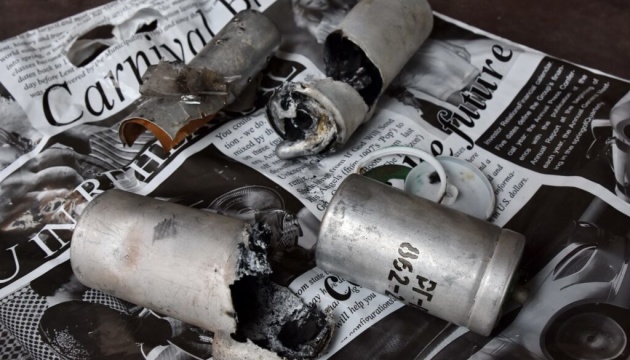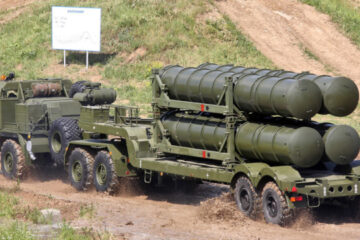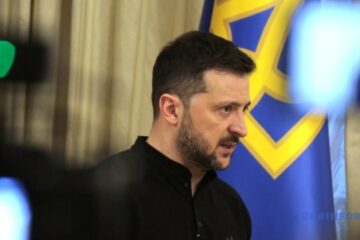
Russian forces have significantly escalated their use of banned chemical weapons against Ukrainian troops across the front lines in recent months.
British newspaper The Times said this in an investigation based on data from Ukrainian military sources and experts, according to Ukrinform.
The use of toxic chemicals in warfare is strictly prohibited under international agreements, including the 1997 Chemical Weapons Convention, signed by both Ukraine and Russia. Nevertheless, Russian troops have reportedly used tear gas, chloropicrin — a choking agent –and other “unidentified chemicals” a total of 767 times last month, 844 times in February and 740 times in January. That compares with 166 times in November 2024, the Radiation, Chemical and Biological Protection Department of Ukraine’s Armed Forces (RCBZ) said.
The U.S. State Department and war monitors have previously accused Moscow of using CN and CS gases — also known as tear gas — to deadly effect in Ukraine. It also said that Russia had used chloropicrin, which is severely irritating to the lungs and eyes, to dislodge Ukrainian troops from fortified positions.
Colonel Artem Vlasyuk of Ukraine’s RCBZ claimed that Russian forces had used the agents at least 7,730 times since the beginning of the full-scale invasion in February 2022, including 2,351 recorded occasions since the start of this year.
“Forty per cent of these were recorded as the direct use of K-51 and RG-Vo grenades, which contain CS and CN gas,” Vlasyuk said. “The rest of the cases we identify as the use of dangerous chemicals by the enemy, classified as unknown substances because our units did not have access to the place of use due to intense enemy fire or the loss of positions where these dangerous chemical substances were used.”
Ukraine’s National Security and Defense Council has also reported that Russia’s Iranian-made “kamikaze” attack drones have also been armed with payloads of CS gas for attacks from the air.
The Organization for the Prohibition of Chemical Weapons (OPCW) has issued two reports confirming the presence of CS gas on Ukrainian battlefields, but declined to comment on the use of other types of gases. Its work is based on samples taken from the Ukrainian side, but it has not attributed blame or commented on the scale of the chemicals’ use.
Eyewitness testimonies remain the primary source of evidence. Sergeant “Haika,” 29, a medic serving with 1st Battalion, 80th Air Assault Brigade, said that in November her unit was fighting at the village of Klishchiivka, in the eastern Donetsk region, when it was hit with a chemical agent.
“I remember one gas attack on six of our soldiers: one was killed and the other five were poisoned. They suffered constant tears, salivation, short-term loss of vision, suffocation,” she said. The dead soldier had suffered no visible injuries, she added.
Later that same month, some 170 miles to the north during the battle for Kupiansk, in the Kharkiv region, the Russians launched a barrage of rockets from multiple-launch systems at Ukrainian positions.
“The guys were in a dugout, in cover and stopped responding,” one officer, who requested anonymity, said. “When the group went to them, it turned out that the guys were all asleep. And when we started waking them up, everyone was vomiting a lot. They were taken outside, they were suffocating. They say that there was a gas release in front of the dugout, but without smell, without color. The same thing happened on a neighboring position after a multiple launch rocket system strike. The guys were also vomiting.”
Soldiers from Ukraine’s 65th Mechanized Brigade, defending Robotyne (Zaporizhzhia region), claimed they are subjected to daily chemical attacks, and showed recovered tear gas grenades allegedly dropped by Russian drones.
Senior Lieutenant Sergey Skibchyk also claimed that “very often the Russians disguise poisonous substances as tear gas, or come up with their own dispersal devices, such as adding ordinary plastic bottles with various elements that, when combined or when exploded, emit aerosols that are lethal.”
“We are not talking tears and coughing, we are talking about chemical burns of the larynx, lungs, oral cavity, nasopharynx and even the skin,” Skibchyk said.
When a Russian drone dropped a grenade on the position of Captain Dmytro Kravchuk and Petro Galeru, it caused only a small explosion in their dugout, their fellow soldiers said. Hours later, their rescuers found no visible injuries on their dead comrades, only rings of foam around their mouths.
When their bodies arrived at the morgue in Dnipro, pathologists were struck by the lack of visible injuries — but each had fatally high levels of carboxyhemoglobin in their blood, an indication of carbon monoxide poisoning.
Carbon monoxide inhalation alone should not cause foaming around the mouth, said Alastair Hay, emeritus professor of environmental toxicology at the University of Leeds. “That would indicate some irritant, probably, something to cause secretion into the lung,” Hay said. “That would suggest to me some mixed exposure, that carbon monoxide (CO) was one of the consequences, likely from detonation in a confined space. The irritant would affect lung function and compromise breathing so the victim’s blood oxygen levels would be lowered.”
Photo: Andrii Andriienko / 65th Mechanized Brigade
Source: The Times: Russia increasing chemical weapon attacks against Ukrainian forces



